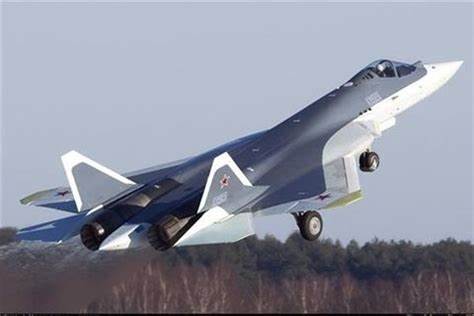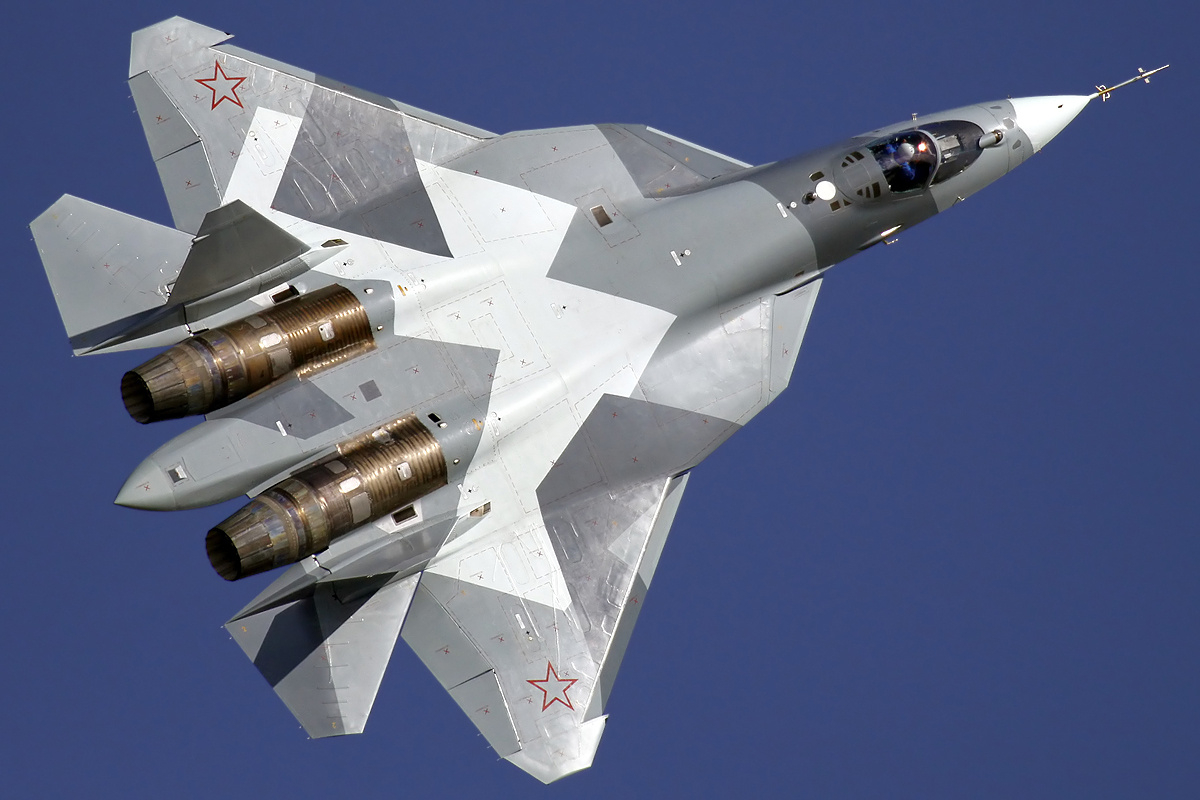
Amidst the thunderous echoes of modern warfare, the silhouette of fifth-generation stealth fighters carve through the skies, embodying the pinnacle of aerial supremacy.

Russia’s Su-57, a fifth-generation fighter, mirrors the broader hurdles confronting Russian military endeavors, particularly amid the ongoing Ukraine conflict. Despite its debut in 2010 and commencement of production in 2019, only 32 Su-57s have been manufactured due to various setbacks and delays.

Challenges such as its radar cross-section and reliance on outdated engines have hindered its effectiveness. Despite its capabilities, the Su-57 hasn’t significantly altered the course of the Ukraine conflict. Intriguingly, the jet has garnered cultural attention, notably featuring in “Top Gun: Maverick” as a cutting-edge, formidable aircraft, despite its limited operational deployment by Russia.

The Su-57’s challenges underscore larger issues within Russia’s military endeavors, despite its increasing visibility in popular culture through films like “Top Gun: Maverick.”

Consequently, it’s unlikely that the Su-57 will ever rival the F-22 or F-35 as the premier stealth fighter in the world.

As the Russo-Ukraine War enters its third year, Russia’s military challenges are evident. The conflict has evolved into a battle of attrition, with Russia struggling to make significant territorial gains and notably failing to dominate the airspace over Ukraine.

This failure underscores the limitations of Russia’s air force, highlighting both the aircraft it currently possesses and those it lacks, particularly the absence of the fifth-generation Sukhoi Su-57.

The Sukhoi Su-57, touted as a fifth-generation multirole fighter, took its maiden flight in 2010, yet despite over a decade passing since then, only 32 units have been manufactured since production commenced in 2019.

Continuous setbacks and delays have plagued the Su-57’s production. Even completed aircraft often fail to meet expectations, as highlighted by Alex Hollings of Sandboxx News, who noted that expert assessments suggest the Su-57 possesses a radar cross-section (RCS) of approximately 0.5 square meters.

This RCS is comparable to that of a 4th generation F/A-18 Super Hornet when flying without ordnance and is significantly larger than the RCS of the F-22 Raptor by a factor of 5,000.

Hollings elaborated further, highlighting that the Su-57 faces additional challenges beyond its stealth capabilities. Delays in Russia’s 5th generation engine program have resulted in the Su-57 fleet operating with the same AL-41F1 engines as the non-stealth Su-35S.

Furthermore, a Rand Corporation analysis suggests that the aircraft’s advanced 360-degree sensor suite remains incomplete, likely hindered by international sanctions imposed on Russia following its 2014 invasion of Ukraine.

However, despite these setbacks, defense expert Christian Orr emphasizes that the Su-57 should not be underestimated by pilots of other fighter aircraft, including the F-22, F-35, and 4th generation planes.

Orr acknowledges that despite its challenges, the Su-57 is still a highly capable fighter jet, boasting features like 360-degree thrust vectoring control for enhanced maneuverability and impressive top speeds reaching around Mach 2.

Despite its flaws, the Su-57 could potentially enhance Russian capabilities in the airspace over Ukraine, provided the aircraft can be effectively deployed.
Relevant articles:
– Russia’s Su-57 Stealth Fighter Will Never Be as Good as the F-22 or F-35, The National Interest
– Russia’s Su-57 Felon vs. F-35: Which Stealth Fighter Is Better?, The National Interest
– F-35 Lightning II Vs. Sukhoi Su-57: Stealth Capabilities Face-Off, Simple Flying
– Russia’s Su-57 Felon vs. F-35: Which Stealth Fighter Is Better?, The National Interest

